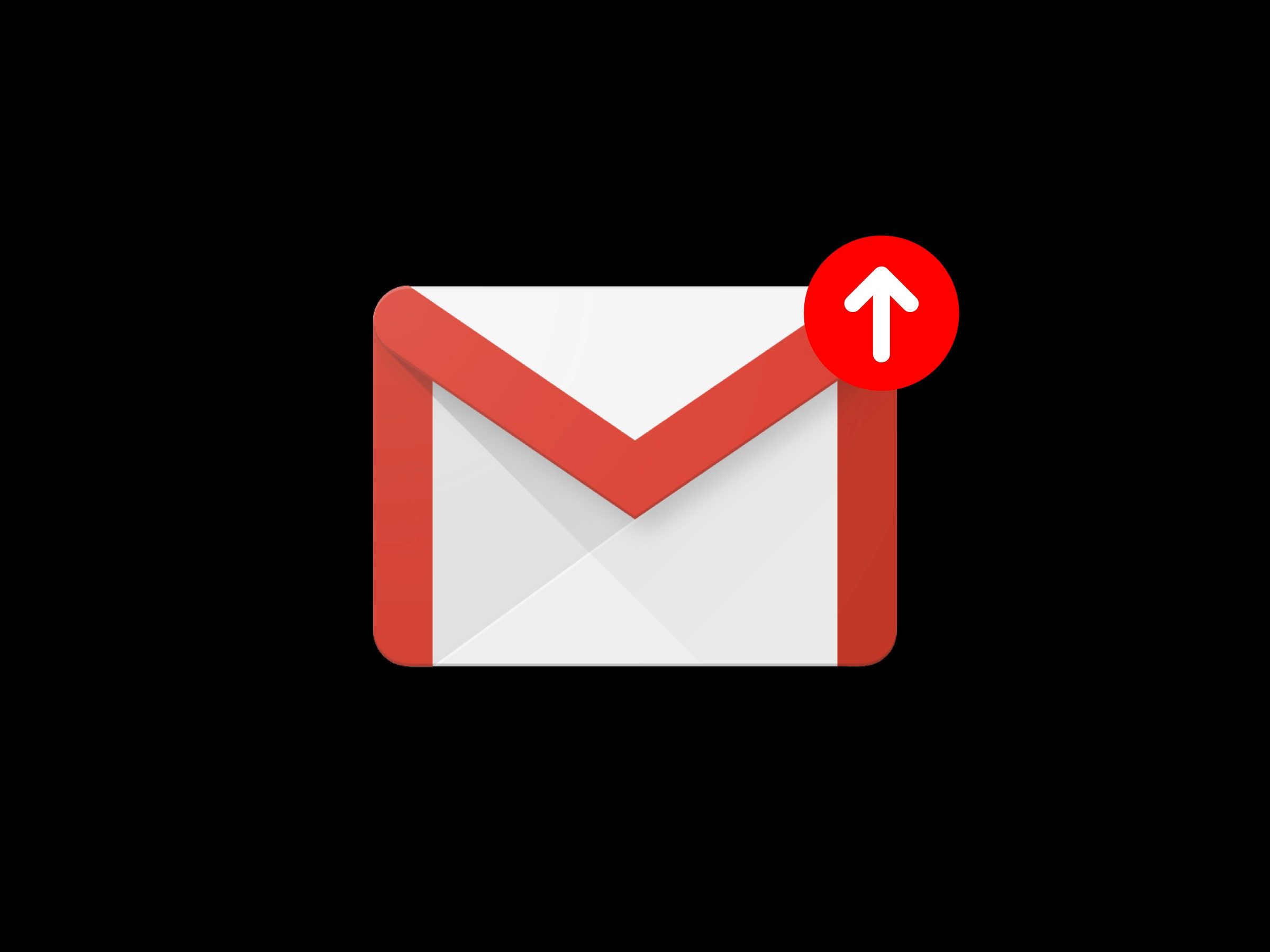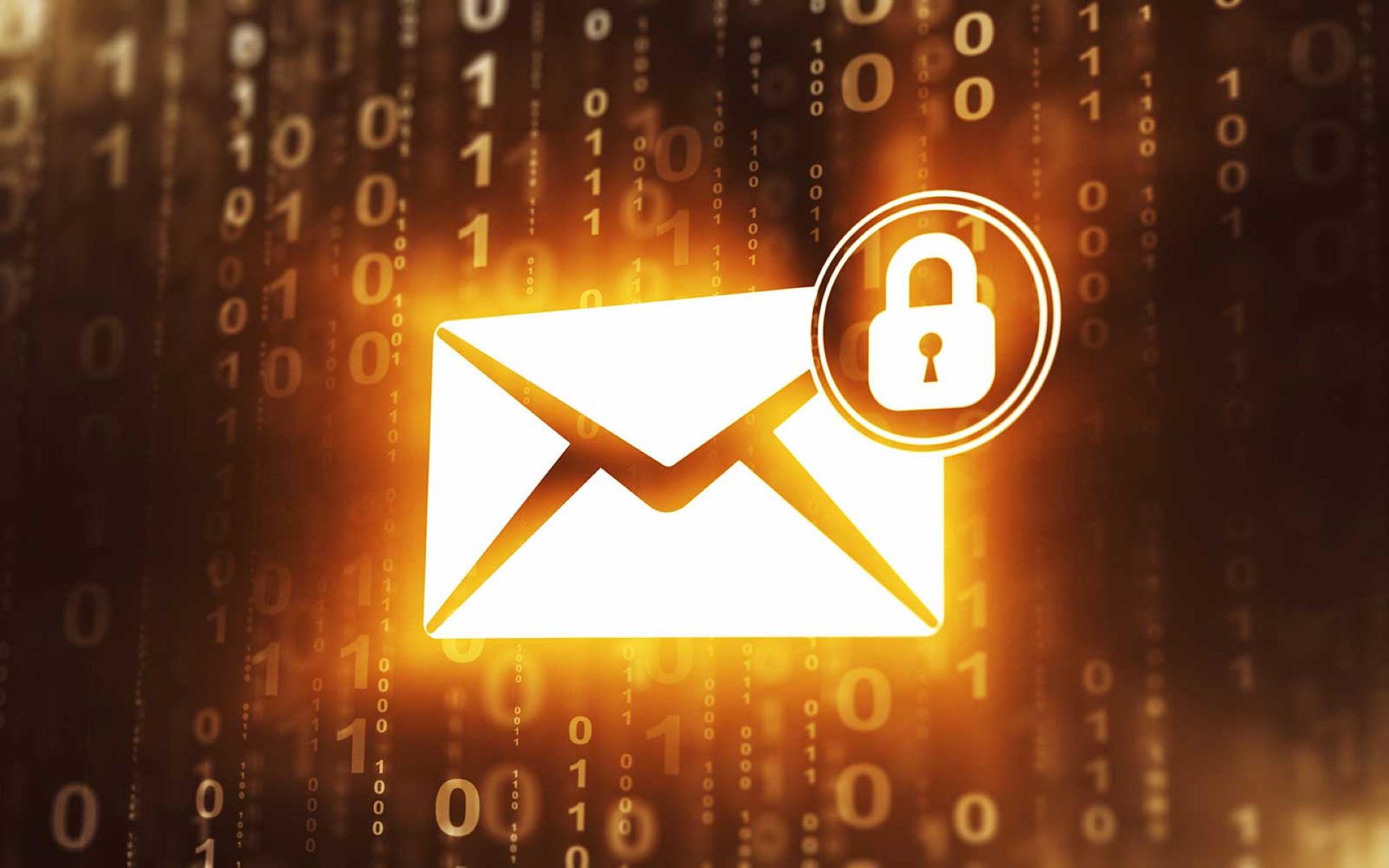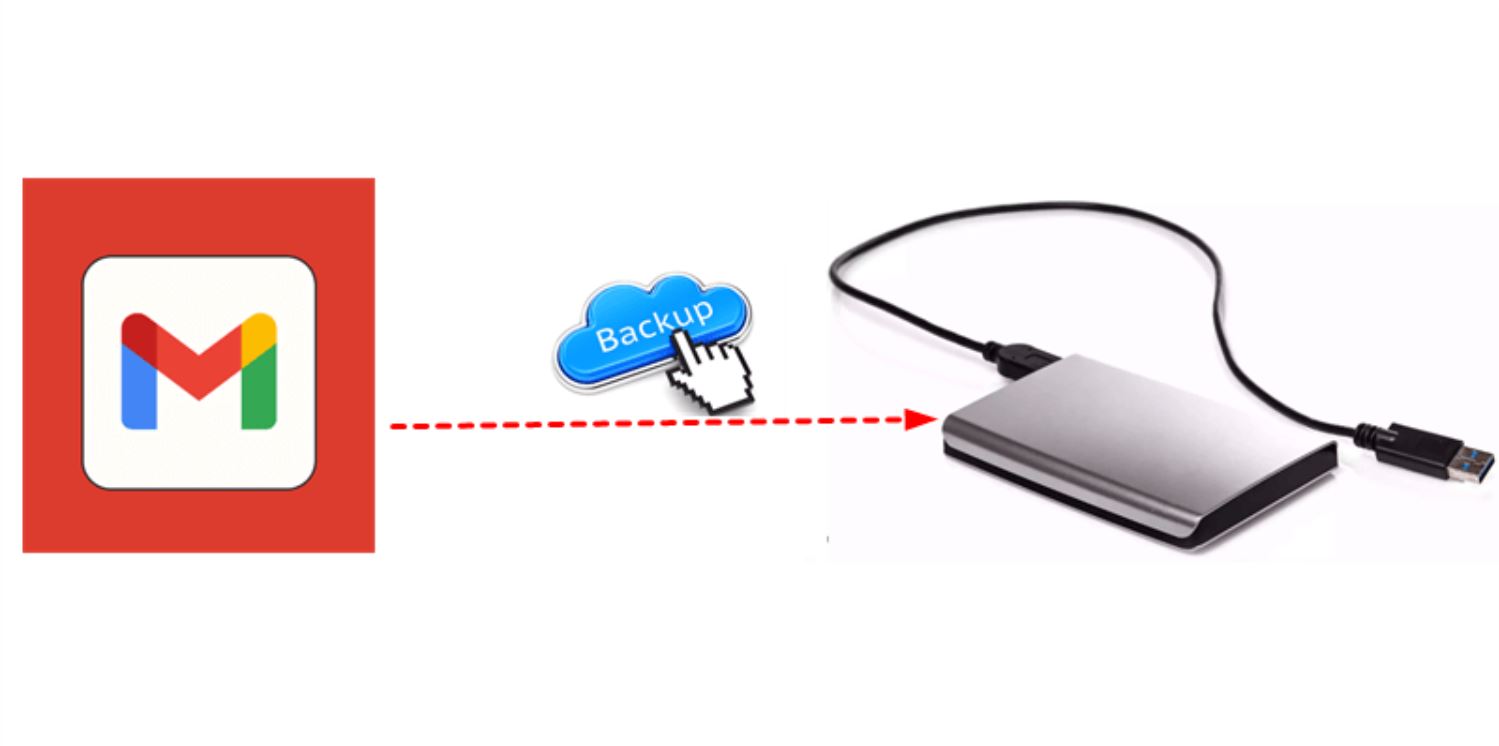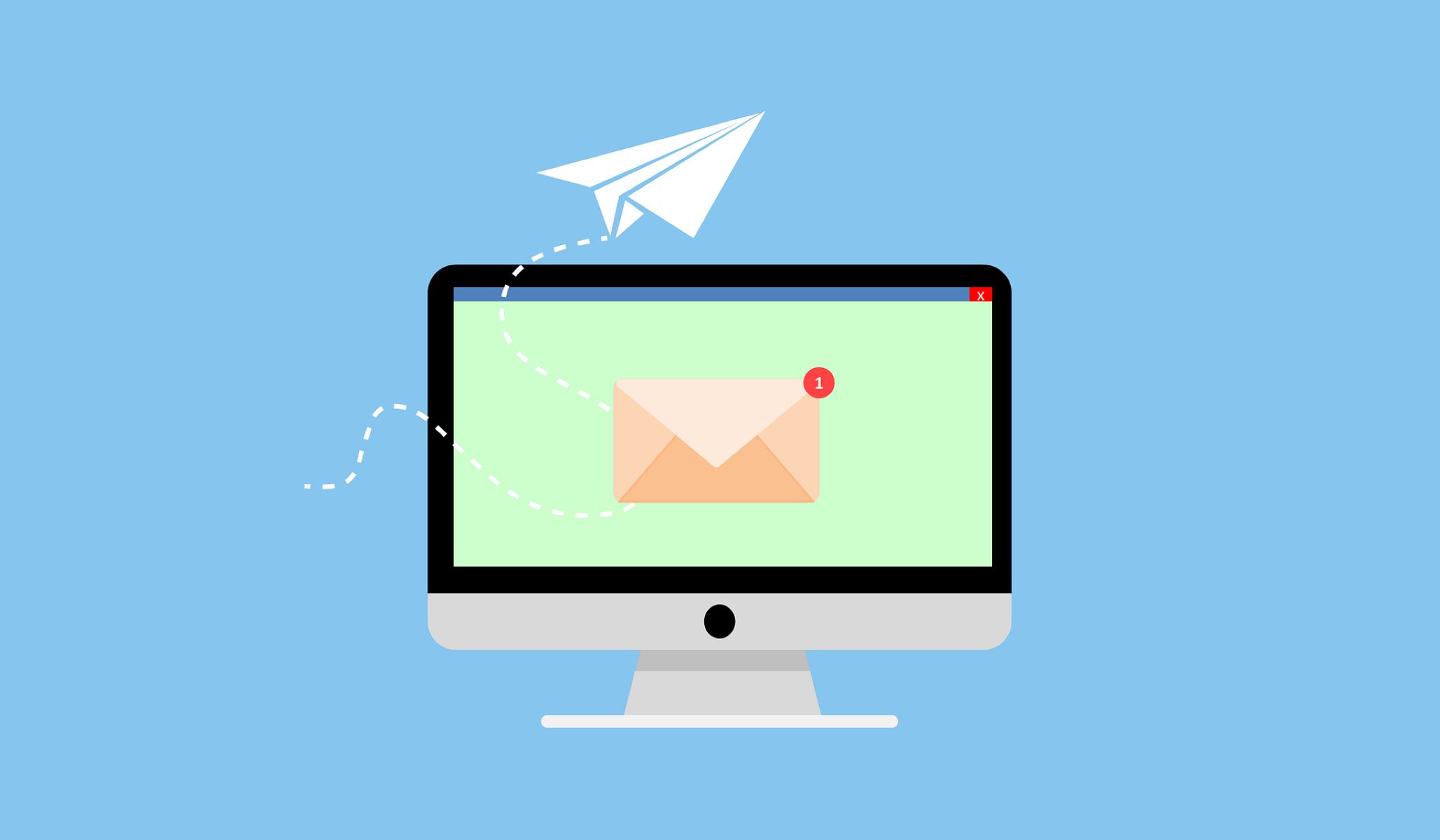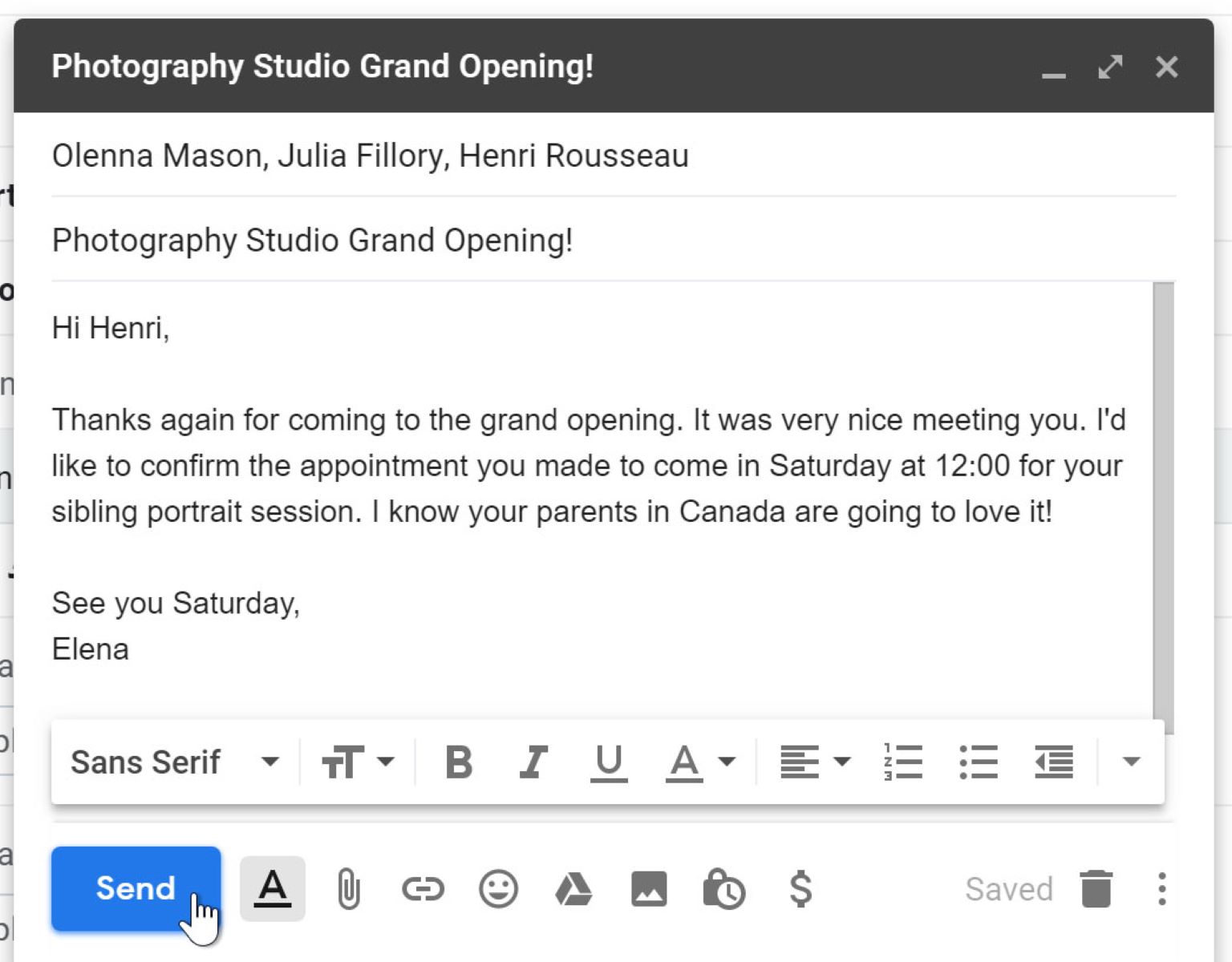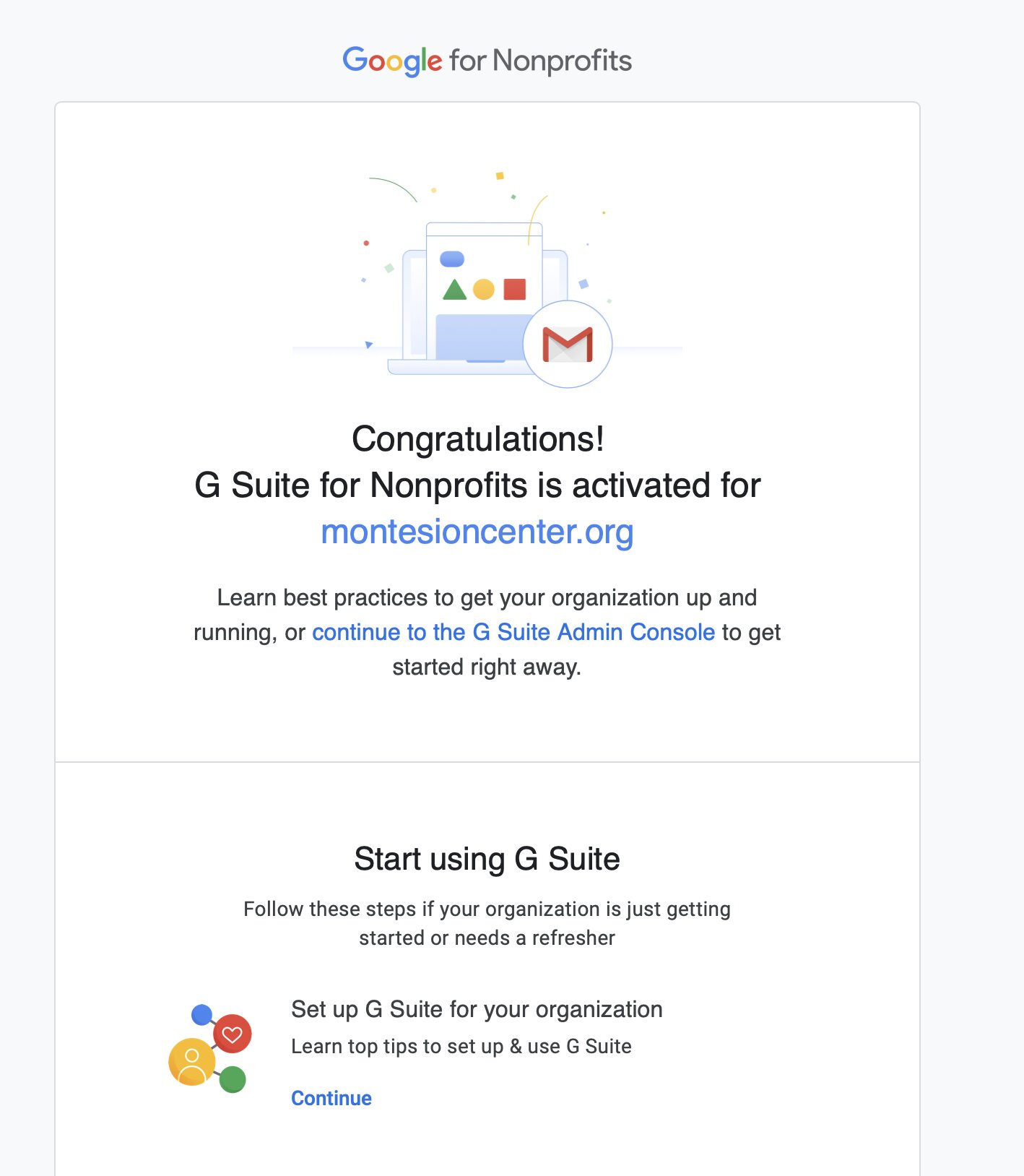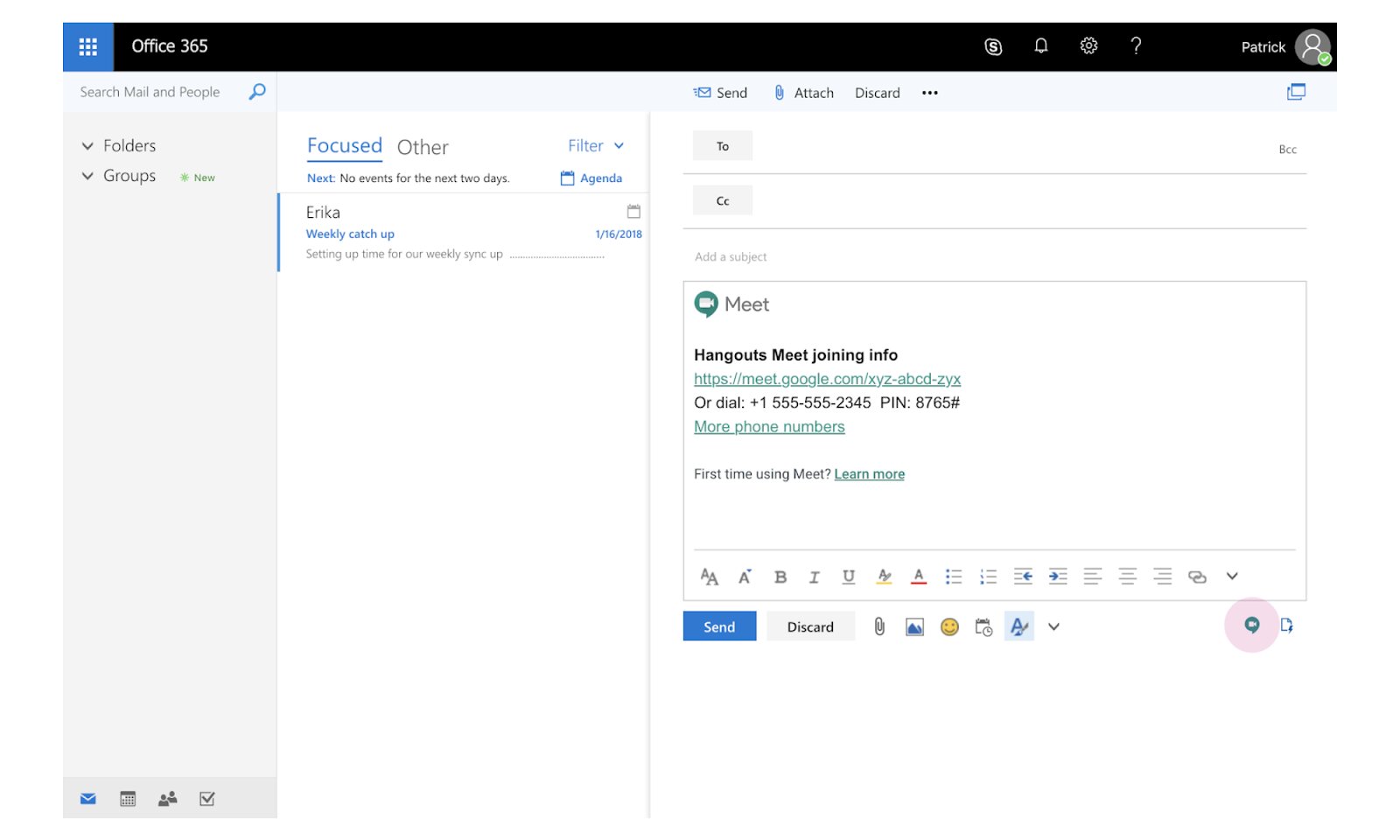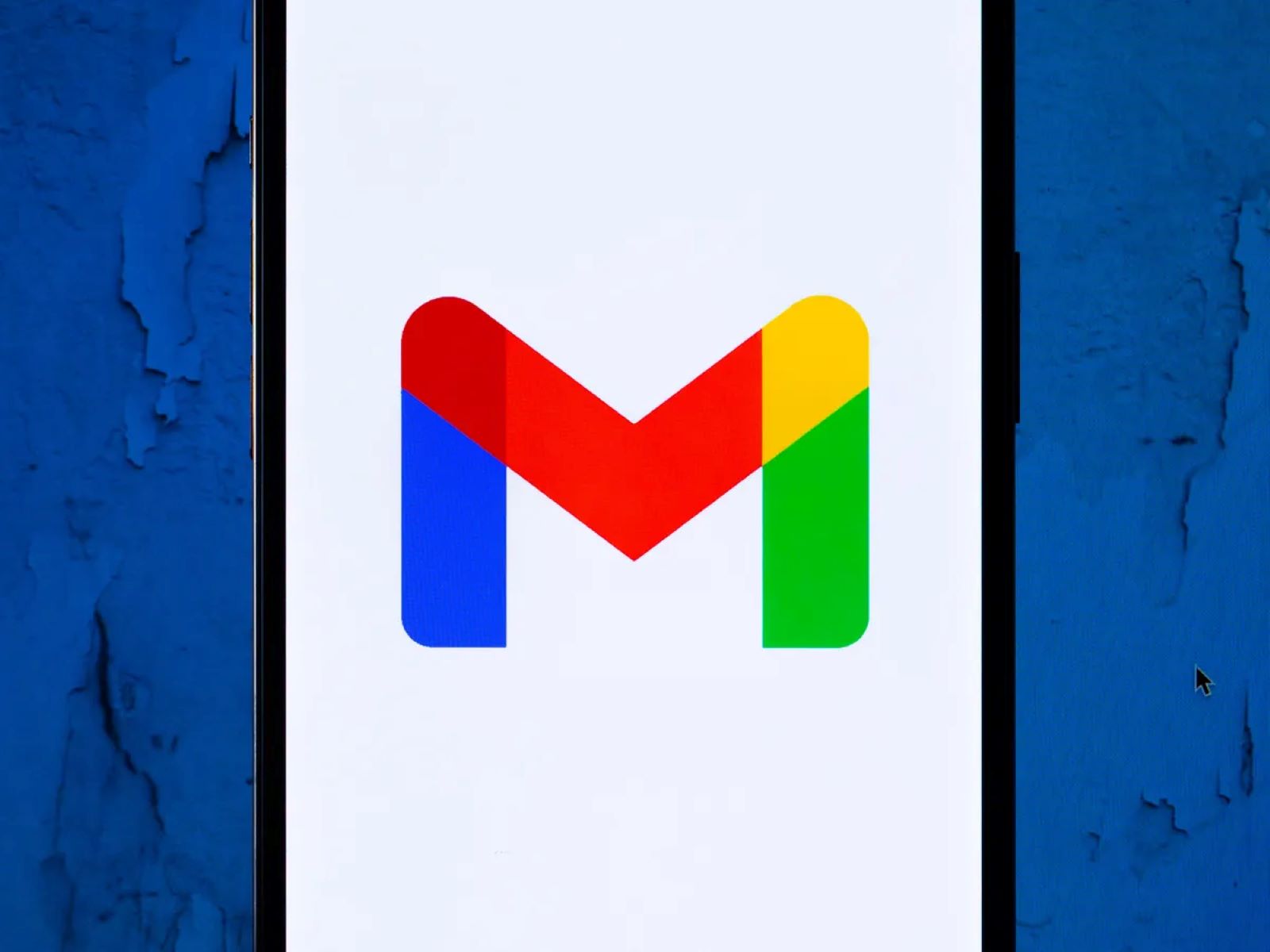Why Encryption is Important
In today’s digital age, where email has become a vital communication tool for personal and professional conversations, ensuring the security and privacy of our messages is paramount. Encryption plays a crucial role in protecting sensitive information from unauthorized access, interception, and tampering. Here are a few compelling reasons why encryption is important when it comes to email:
- Privacy Protection: Encryption ensures that only the intended recipient can read the content of an email. By scrambling the message, encryption prevents unauthorized individuals or entities from intercepting and understanding the information exchanged.
- Data Confidentiality: Email encryption safeguards the confidentiality of sensitive data, such as personal details, financial information, or intellectual property. This is particularly crucial for businesses that handle sensitive client or customer data and need to comply with data protection regulations.
- Preventing Man-in-the-Middle Attacks: Encryption helps prevent attackers from intercepting and modifying messages sent between the sender and recipient. It ensures that the message arrives intact, without any alterations made by unauthorized parties.
- Secure File Sharing: Email encryption allows for the secure transmission of attachments and files. By encrypting the attachments, you can ensure that the content remains confidential, even if it falls into the wrong hands during transit or at rest on email servers.
- Protection Against Hacking and Identity Theft: Encrypting email can help safeguard against hacking attempts and identity theft. By encrypting your emails, you make it significantly harder for attackers to access your personal or sensitive information.
To summarize, email encryption plays a crucial role in protecting privacy, maintaining data confidentiality, preventing unauthorized access, facilitating secure file sharing, and preventing hacking and identity theft. By encrypting our emails, we can ensure that our communications remain confidential and secure in an increasingly interconnected digital world.
How to Enable Encryption in Gmail
Gmail, being one of the most popular email platforms, provides built-in encryption features to ensure the security of your messages. Here’s how you can enable encryption in Gmail:
- Enable HTTPS: Start by ensuring that you are using a secure connection when accessing your Gmail account. Go to Gmail settings, then navigate to the “General” tab. Make sure that the option “Browser connection” is set to “Always use HTTPS.” This ensures that your connection to Gmail is encrypted.
- Send Encrypted Emails: Gmail offers the option to send encrypted emails using the built-in Confidential Mode feature. When composing a new email, click on the lock icon with a clock at the bottom of the compose window. You can set an expiration date for the email, require a passcode for the recipient to access the message, and even revoke access to the email at any time.
- Encrypt Gmail Attachments: To protect the confidentiality of attachments, you can use Google Drive to encrypt and share files securely. When composing an email, click on the Google Drive icon at the bottom of the compose window to add and encrypt attachments. This ensures that only the recipient can access the files using their Google account credentials.
- Use a Secure Email Extension: Consider using a secure email extension or plugin for additional encryption and security features. These extensions enhance the encryption capabilities of Gmail, providing end-to-end encryption and other advanced security options.
- Verify Encryption of Incoming Emails: Gmail automatically scans incoming emails for potential security risks. Look for the “Authenticated Received Chain” (ARC) seal in the email header, indicating that the email was properly authenticated and not tampered with during transit.
By following these steps, you can enable encryption and enhance the security of your emails when using Gmail. It is important to take advantage of these features to protect your sensitive information and ensure that your communications remain confidential.
The Basics of End-to-End Encryption
End-to-end encryption (E2EE) is a robust method of securing data during transmission. Unlike traditional encryption methods, which may only encrypt data at certain stages of communication, end-to-end encryption encrypts the information at the source and keeps it encrypted until it reaches the intended recipient. Here are the key aspects to understand about end-to-end encryption:
- Encryption Process: With end-to-end encryption, the data is encrypted on the sender’s device using a specific encryption algorithm. The encrypted data is then sent through the network and only decrypted when it reaches the recipient’s device. This ensures that the content of the message remains secure and confidential throughout the entire transmission process.
- Key Exchange: To enable secure communication, end-to-end encryption requires the exchange of encryption keys between the sender and recipient. These keys are used to encrypt and decrypt the data. It is essential to use strong encryption keys and ensure their secure distribution to maintain the integrity of the encryption process.
- No Intermediary Access: Unlike traditional encryption methods, end-to-end encryption eliminates the role of intermediaries in accessing decrypted data. This means that even service providers, such as email providers, cannot access the content of the encrypted messages. Only the sender and recipient have the necessary keys to decrypt the data.
- Enhanced Security: End-to-end encryption provides a higher level of security compared to other encryption methods. It ensures that only the intended recipient can decrypt and view the content of the message, protecting against interception and unauthorized access by hackers, government surveillance, or malicious third parties.
- Multiple Communication Channels: End-to-end encryption can be used across various communication channels, including email, instant messaging apps, voice calls, and video chats. It provides a universal method of securing data exchanged through these channels, regardless of the platform or service being used.
In summary, end-to-end encryption is a powerful security measure that protects data throughout the entire transmission process. By encrypting data at the source and ensuring that it remains encrypted until it reaches the intended recipient, end-to-end encryption provides enhanced security, privacy, and protection against unauthorized access. Understanding the basics of end-to-end encryption is essential to make informed choices about securing sensitive information and maintaining the confidentiality of your communications.
Using PGP (Pretty Good Privacy) with Gmail
PGP, or Pretty Good Privacy, is a widely-used encryption method that provides strong security and privacy for email communication. By using PGP with Gmail, you can add an extra layer of protection to your messages. Here’s how you can use PGP with Gmail:
- Install a PGP Extension: Start by installing a PGP extension or plugin in your web browser or email client. Popular options include Mailvelope, FlowCrypt, or Enigmail.
- Generate PGP Key Pair: Once the extension is installed, you will need to generate a PGP key pair. This includes a public key that you share with others to encrypt messages and a private key that you keep secure and use to decrypt messages.
- Import Keys: If you already have PGP keys, you can import them into the extension. If not, the extension will generate a key pair for you. Ensure that your private key is protected with a strong passphrase.
- Configure the Extension: Set up the PGP extension by entering your email address and linking it to your public key. This step allows the extension to automatically encrypt and decrypt messages in your Gmail account.
- Encrypting Emails: When composing a new email in Gmail, you will now see options to encrypt the message using PGP. Simply click on the appropriate button or option provided by the PGP extension to encrypt the email.
- Decrypting Emails: When you receive an encrypted email, the PGP extension will automatically detect it and offer options to decrypt the message. Click on the appropriate button or option to decrypt the email using your private key.
- Verify the Encryption: To ensure that encryption is working correctly, you can verify the authenticity of the encrypted email using the sender’s public key. This step confirms that the message was indeed encrypted with the intended recipient’s key.
By utilizing PGP with Gmail, you can take advantage of the robust security and privacy features offered by this encryption method. It allows you to encrypt and decrypt emails seamlessly, ensuring that your messages remain private and protected from unauthorized access.
Installing and Configuring PGP in Your Email Client
If you prefer to use a dedicated email client instead of accessing Gmail through a web browser, you can still use PGP to encrypt your emails. Here’s a step-by-step guide on installing and configuring PGP in your email client:
- Select an Email Client: Choose an email client that supports PGP encryption. Popular options include Mozilla Thunderbird, Microsoft Outlook, and Apple Mail. Ensure that you have the latest version of the email client installed on your device.
- Install a PGP Plugin or Extension: Look for a PGP plugin or extension compatible with your chosen email client. Some popular options for PGP extensions include Enigmail for Thunderbird and Gpg4win for Outlook.
- Download and Install GnuPG: PGP relies on the GNU Privacy Guard (GnuPG), so you will need to download and install it on your computer. GnuPG provides the necessary encryption and decryption capabilities for PGP. Ensure that you download the correct version for your operating system.
- Configure the PGP Plugin: After installing the PGP plugin or extension, you will need to configure it. This usually involves linking the plugin to your GnuPG installation and setting up your key pair.
- Generate PGP Key Pair: Use the PGP plugin or extension to generate your PGP key pair. This includes a public key for encryption and a private key for decryption. Remember to choose a strong passphrase to protect your private key.
- Import or Share Your Public Key: If you already have a PGP key pair, you can import your public key into the email client. If not, you will need to share your public key with others so they can encrypt messages sent to you.
- Encrypting and Decrypting Emails: With the PGP plugin configured, you can now encrypt outgoing emails and decrypt incoming encrypted emails. Look for the encryption/decryption options provided by the plugin in your email client’s compose/receive windows.
- Managing Keyring: As you communicate with others using PGP, you will accumulate their public keys. It’s important to regularly update your keyring by importing trusted public keys and verifying their authenticity.
By following these steps, you can install and configure PGP in your email client, allowing you to encrypt and decrypt emails securely. Remember to regularly update your keyring and keep your private key safe to maintain the integrity and security of your PGP-encrypted communications.
Creating and Managing PGP Keys
PGP (Pretty Good Privacy) relies on the use of cryptographic keys to encrypt and decrypt emails. Here’s a guide to creating and managing PGP keys:
- Choose a PGP Key Pair: Begin by selecting a PGP key pair. This consists of a public key, which you share with others to encrypt messages sent to you, and a private key, which you keep secure and use to decrypt messages.
- Generate a Key Pair: Use a PGP tool or software, such as GnuPG or the PGP plugin in your email client, to generate a key pair. You will typically be prompted to provide a name, email address, and passphrase for your private key.
- Set a Strong Passphrase: When creating your private key, choose a strong passphrase that is unique and not easily guessable. This passphrase adds an extra layer of security, ensuring that even if the private key is compromised, it cannot be used without the passphrase.
- Back up Your Keys: It is essential to create backups of your PGP keys. Store them securely, preferably in an encrypted format, on multiple devices or storage locations. This ensures that you can regain access to your keys if you lose or damage your primary device.
- Share Your Public Key: Distribute your public key to those with whom you wish to communicate securely. You can share it in various ways, such as attaching it to your email signature, uploading it to a public key server, or sending it directly to trusted individuals.
- Revoking and Renewing Keys: If your private key is compromised, or if you suspect it has been, it is essential to revoke the compromised key and generate a new key pair. Revoking ensures that the compromised key cannot be used to decrypt future messages.
- Managing Key Expiration: It is good practice to set an expiration date for your PGP keys. This allows you to periodically renew your keys and ensures security by requiring regular updates and key verification.
- Updating Your Keyring: Maintain a keyring, which is a collection of trusted public keys from individuals you communicate with. Regularly update your keyring by importing new keys and verifying their authenticity to ensure secure and accurate encryption.
By following these guidelines, you can create and manage your PGP keys effectively, ensuring the security and privacy of your email communications. Remember to keep your private key secure and consider regularly renewing your keys and updating your keyring for enhanced security.
Encrypting and Decrypting Emails with PGP
PGP (Pretty Good Privacy) allows you to encrypt and decrypt your emails securely, ensuring that your communications remain confidential. Here is a step-by-step guide on how to encrypt and decrypt emails with PGP:
- Encrypting Emails: When composing an email, ensure that you have the recipient’s public key. Use a PGP tool or plugin, such as GnuPG or a PGP client, to encrypt the email using the recipient’s public key. This will scramble the content in a way that can only be decrypted with the recipient’s private key.
- Signing Emails: If you want to ensure the authenticity and integrity of your email, you can also sign it with your private key. This adds a digital signature that recipients can use to verify that the email indeed came from you and has not been tampered with.
- Sending the Encrypted Email: Once the email is encrypted and signed, you can send it as you would any other email. The encrypted content will remain secure, and the recipient will need their private key to decrypt and read the message.
- Decrypting Emails: When you receive an encrypted email, use your PGP tool or plugin to decrypt it. Ensure that you have imported your private key into the PGP tool and enter the passphrase associated with your private key when prompted. The tool will decrypt the email and display the original content.
- Verifying the Digital Signature: If the sender has signed the email with their private key, you can verify the digital signature with their public key. This confirms that the email was indeed sent by the person associated with the public key and has not been tampered with during transmission.
- Replying and Forwarding Encrypted Emails: If you wish to reply to or forward an encrypted email, ensure that your PGP tool is configured to encrypt your outgoing messages with the appropriate public key(s). This ensures that your response remains secure and can only be read by the intended recipient(s).
By following these steps, you can encrypt and decrypt emails using PGP, adding an extra layer of security and ensuring that your sensitive information remains private during transmission.
Tips for Ensuring Secure Communication
When it comes to secure communication, following best practices can help safeguard your sensitive information and protect your privacy. Here are some essential tips to ensure secure communication:
- Use Strong Passwords: Choose unique and complex passwords for your email accounts and other online platforms. A strong password with a combination of letters, numbers, and symbols adds an extra layer of security.
- Enable Two-Factor Authentication (2FA): Enable two-factor authentication for your email accounts and other online services whenever possible. This adds an additional layer of protection by requiring a second verification step, such as a unique code sent to your mobile device.
- Keep Software Updated: Regularly update your operating system, email client, and any encryption tools or plugins you use. Software updates often include security patches and fixes for vulnerabilities that could be exploited.
- Beware of Phishing Attempts: Be cautious of email phishing attempts where attackers pose as legitimate entities to trick you into revealing sensitive information. Exercise caution when clicking on links or downloading attachments, and never share confidential information unless you are certain of the recipient’s identity.
- Encrypt Email Attachments: Encrypt any confidential or sensitive attachments before sending them via email. Use encryption tools or services like password-protected ZIP files or secure file-sharing platforms to ensure the content remains secure during transit.
- Regularly Back Up Your Data: Back up your important emails and files regularly. In the event of data loss or a security breach, having backup copies ensures you can recover your information without any major disruptions.
- Avoid Using Public Wi-Fi for Sensitive Communications: Public Wi-Fi networks are often unsecured and pose potential risks to your privacy. Avoid sending or accessing sensitive information, such as financial details or personal data, while connected to public Wi-Fi networks.
- Use Secure Communication Channels: Whenever possible, use secure communication channels that offer end-to-end encryption. This ensures that your messages and attachments remain encrypted from the sender to the recipient, protecting them from unauthorized access.
- Regularly Review and Update Your Security Measures: Stay up to date with the latest security practices and technologies. Regularly review and update your encryption tools, software, and security settings to ensure optimal protection of your communication and data.
- Educate Yourself and Stay Informed: Continuously educate yourself about new threats and best practices for secure communication. Stay informed about the latest security trends, be aware of common attack techniques, and take proactive steps to protect your privacy.
By following these tips, you can enhance the security of your communication and protect your sensitive information from unauthorized access. Stay vigilant, make informed choices, and prioritize security to ensure secure and private communication in today’s digital landscape.
Frequently Asked Questions about Email Encryption
As email encryption becomes increasingly important, many questions arise regarding its implementation, benefits, and usage. Here are answers to some frequently asked questions about email encryption:
- What is email encryption? Email encryption is the process of encoding email messages to protect their content from unauthorized access. It ensures that only the intended recipient can read the message by scrambling the content using cryptographic algorithms.
- Why should I encrypt my emails? Encrypting your emails provides an additional layer of security and privacy. It helps protect sensitive information from interception, ensures data confidentiality, prevents man-in-the-middle attacks, and guards against hacking and identity theft.
- What is end-to-end encryption? End-to-end encryption (E2EE) is a secure communication method that encrypts the message at the source and keeps it encrypted until it reaches the intended recipient. It ensures that only the sender and recipient can decrypt and read the content, providing the highest level of privacy.
- How does email encryption work? Email encryption uses public-key cryptography, where each user has a pair of keys: a public key for encryption and a private key for decryption. The sender uses the recipient’s public key to encrypt the email, and the recipient uses their private key to decrypt it.
- What is PGP (Pretty Good Privacy)? PGP is a popular email encryption standard that provides strong security and privacy. It uses a combination of symmetric-key and public-key encryption to encrypt and decrypt email messages.
- Can I encrypt attachments in my emails? Yes, you can encrypt attachments in your emails. Some email clients offer built-in encryption options, while others may require additional plugins or tools to encrypt attachments securely.
- Is email encryption compatible with all email clients? Email encryption is compatible with most email clients, although the specific implementation may vary. It is important to choose an email client that supports encryption or install plugins/extensions that provide encryption functionality.
- Can I decrypt encrypted emails without the sender’s private key? No, encrypted emails cannot be decrypted without the corresponding private key. Only the recipient with the private key can decrypt and read the message.
- Is email encryption legally binding? While email encryption provides a higher level of security, it does not alter the legality or enforceability of the email content. The legal aspects of an email are determined by the existing laws and regulations regarding communication and agreements.
- Is email encryption completely foolproof? While email encryption significantly enhances security, it is not entirely foolproof. Factors such as weak passwords, compromised devices, or phishing attacks can still compromise the security of encrypted emails. It is crucial to follow best practices and use additional security measures to mitigate these risks.
By understanding the basics of email encryption and its benefits, you can make informed decisions about implementing it to protect your sensitive information and maintain privacy in your communication.
Conclusion
Email encryption is a critical aspect of maintaining secure and private communication in today’s digital world. By encrypting our emails, we can ensure the confidentiality of our messages, protect sensitive information from unauthorized access, and guard against potential threats such as hacking and identity theft.
Throughout this article, we have explored various aspects of email encryption. We discussed the importance of encryption in safeguarding privacy, maintaining data confidentiality, and preventing unauthorized access. We also covered the basics of end-to-end encryption, the use of PGP with Gmail, installing and configuring PGP in email clients, creating and managing PGP keys, and the process of encrypting and decrypting emails.
Additionally, we offered tips for ensuring secure communication, including using strong passwords, enabling two-factor authentication, keeping software updated, avoiding phishing attempts, and using secure communication channels. We also addressed common questions about email encryption, providing clarity on concepts such as end-to-end encryption, PGP, the compatibility of encryption with different email clients, and the legal aspects of email encryption.
In conclusion, email encryption is a vital tool for protecting our digital communications. By implementing encryption measures, staying informed about security best practices, and using robust encryption tools, we can enhance the confidentiality and security of our email communications. Embracing the principles of secure communication not only protects our own data but also contributes to a safer and more trustworthy digital environment for everyone involved.







